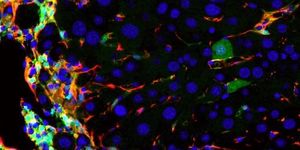Researchers at the University of California, Riverside, figured out how Toxoplasma gondii causes neurodegenerative disease.
Toxoplasma gondii is an obligate intracellular parasite. It’s also a protozoan, meaning it’s a unicellular eukaryote. T. gondii is sort of a quirky parasite - it happily infects all warm-blooded animals (causing “
toxoplasmosis”), but only replicates sexually in domestic cats.
Humans most often become infected by eating undercooked meats and through exposure to cat feces. (Be careful cleaning out that litterbox!) Oddly enough, the highest rates of infection are actually in France, where almost 84% of the population is infected.
Most healthy adults that become infected with T. gondii have only flu-like symptoms. However, infants and the immunocompromised can develop severe neurologic disease.
T. gondii infection increases the amount of extracellular glutamate in the brain; glutamate is a critically important neurotransmitter. Cells called astrocytes usually keep extracellular glutamate at a minimum.
So, what does glutamate have to do with neurodegenerative disease? It turns out that extracellular glutamate also builds up during the course of neurodegenerative diseases like multiple sclerosis and ALS, and it also increases after traumatic brain injuries.
And why is too much glutamate a bad thing? According to study author Emma H. Wilson, “when a neuron fires it releases glutamate into the space between itself and a nearby neuron … the nearby neuron detects this glutamate which triggers a firing of the neuron. If the glutamate isn't cleared by GLT-1 (a glutamate transporter) then the neurons can't fire properly the next time and they start to die.”
Wilson and colleagues wanted to know exactly how T. gondii affects glutamate. They found that Toxoplasma infection causes the astrocytes (the cells that regulate glutamate) to malfunction, downregulating GLT-1 expression. Too little GLT-1 means too much glutamate.
The group also tested this by treating T. gondii-infected mice with the antibiotic ceftriaxone (this drug effectively treats ALS in mice). Ceftriaxone upregulated the expression of GLT-1, decreasing extracellular glutamate and helping neurons function more normally. Pretty nifty!
Sources: UC Riverside, Science Daily, Wikipedia









